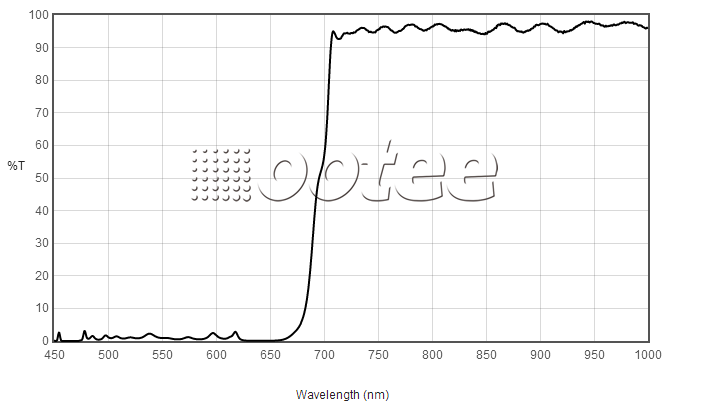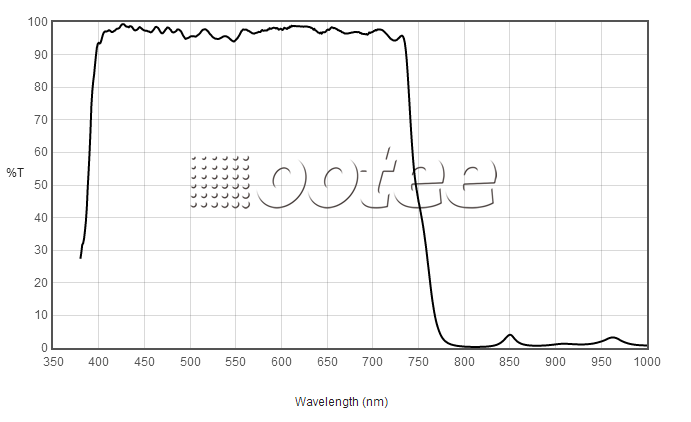Dichroic filters separate a broad spectrum of light into two components: a reflected component and a transmitted component. They provide the ability to select different bands from a spectrum and direct those bands to where they can either be used or discarded. Heat / UV control, color separation, and fluorescence microscopy are a few of the most common uses of dichroic filters.
Dichroic filters consist of thin film dielectric coatings on glass and exhibit sharp transitions between transmitted and reflected wavelengths. Dichroic filters are similar to traditional interference filters but differentiate themselves by reflecting all unwanted wavelengths. Consequently our dichroic range also offers minimal absorbance characteristics.
Our dichroic filters are available in longpass, shortpass, bandpass, bandblocking and colour correction types over a range of wavelengths. Dichroic shortpass and longpass filters can also act as hot and cold mirrors respectively. Click on the links below for more information on individual dichroic filter types.
Dichroic longpass filters
Longpass filters are designed to transmit wavelengths higher than the cut on point and reflect all lower wavelengths. These dichroic longpass filters consist of thin-film dielectric coatings on glass with sharp transitions between the transmitted and reflected bands. Having negligible absorption they are suitable for high powers and do not show the strong fluorescence of certain glass filters.
Dichroic shortpass filters
Shortpass filters are designed to transmit wavelengths lower than the cut off point and reflect all higher wavelengths. Ootee Optical’s Dichroic filters are comprised of a thin-film dielectric coating on glass, resulting in sharp transitions between the transmitted and reflected bands. With negligible absorption, this type of filter is ideal for high powers and lacks the strong fluorescence of certain glass filters.
Dichroic bandpass filters
Dichroic bandpass filters are designed to transmit highly over a specific limited bandwidth while reflecting all other wavelengths. Their design allowed them to isolate the desired wavelength. Dichroic filters offer superior contrast between transmitted and reflected wavelengths. Having negligible absorption they are suitable for high powers and do not show the strong fluorescence of certain glass filters.
Dichroic band blocking filters
Dichroic band blocking filters are designed to block an isolated bandwidth while transmitting all other wavelengths. While traditional glass and interference bandpass filters offer improved blocking characteristics, the advantage of bandblocking dichroic filters comes with the enhanced sharpness of transition between the transmitting and reflecting bands and therefore improved blocking accuracy. Having negligible absorption they are suitable for high powers and do not show the strong fluorescence of certain glass filters.


Our dichroic longpass filters are available in a range of wavelengths types. We are happy to cut and edge filters for non standard sizes to suit your application.